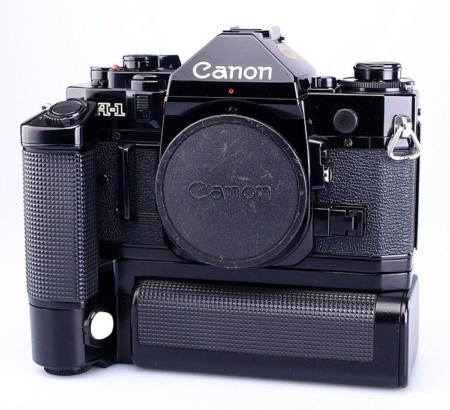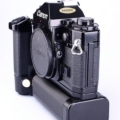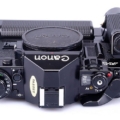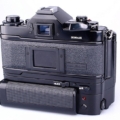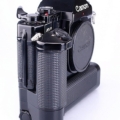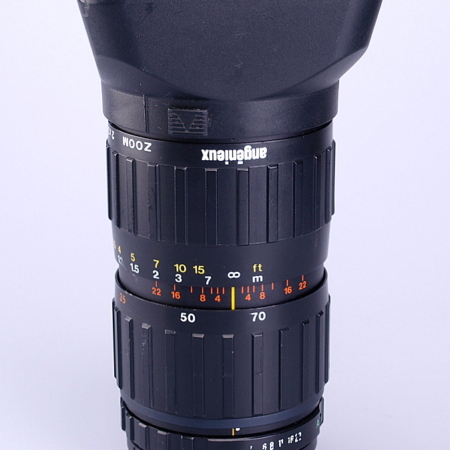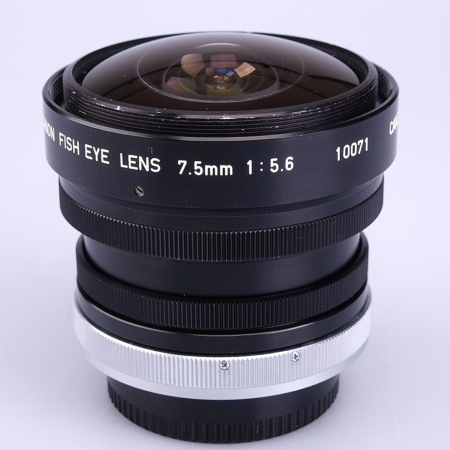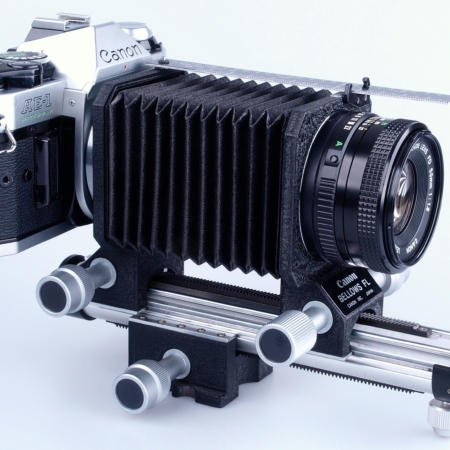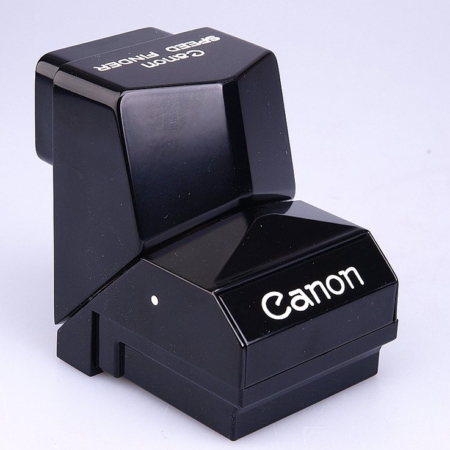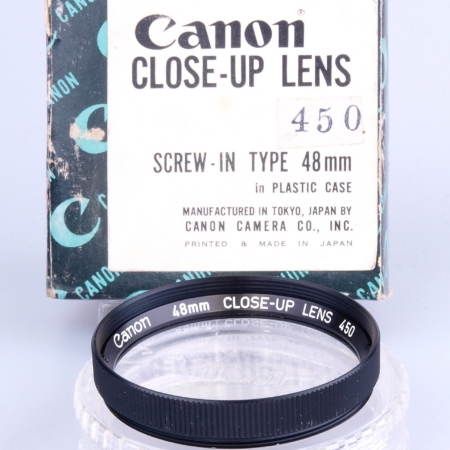innovative when released in 1978. It was notable for its programmed automatic exposure setting, whereby both aperture and shutter speed are automated. While not labeled as such, it was a pioneer in offering the full “PASM” set of exposure options, standard in many later cameras through the present day. The camera is durable and reliable.
Canon’s competitors were considerably slower in introducing programmed SLRs: Minolta in 1982 with the X-700, Nikon with the FA and Pentax with the Super A in 1983 and Olympus with the OM-2S Program in 1984.
The A-1 was among the first cameras to be completely dependent on battery power. This power came from a 6V PX28 battery, or four LR44 1.5V alkaline cells, kept in a battery compartment on the front, partly hidden by a screwed-on finger grip (the “Action Grip”).
Unlike most other Canon SLRs, the A-1 was only available in black finish.
The A-1 has the Canon FD bayonet lens mount and was normally sold with the Canon FD 50mm f/1.8 or 50mm f/1.4 lens. The A-1 accepts any lens with the Canon FD (1971) or FD n (1979) bayonet mount. The lenses feel solid, and are well-finished and balanced. (The more recent EF mount autofocus lenses (1987) cannot be fitted, nor can the FD mount lenses be fitted to autofocus Canon SLRs.)
The A-1 has the choice of aperture- or shutter-priority automatic exposure, the first “programmed” fully-automatic exposure mode, as well as automatic dedicated flash, and a fully manual setting. There is a numerical display in the viewfinder of shutter and aperture, using red LED seven-segment displays. To avoid fogging from the viewfinder on long exposures, the LED display can be switched off, and the eyepiece closed off with a shutter.
The settings dial is shown (right) set to shutter priority auto (“Tv”). The programmed setting (marked [P] in a green square) is just past the 1/1000 mark. Rotating the collar around the shutter-release to “Av” sets aperture-priority and changes the scale from speed (black background) to aperture settings (on a yellow background). Speeds (manual or auto), or apertures (in auto mode) are adjusted by a wheel in front of the dial; the photographer’s right index finger naturally falls on this. There is a sliding cover for the wheel, preventing accidental changes to settings.
For automatic operation, the aperture ring of the lens is set to the “A” position; for manual settings, the required aperture is set on the lens and the shutter set on the dial, in the “Tv” position. On the photographer’s left, on the front is a peculiar slider, with a flip-up finger pad, which is the stop-down lever for depth of field preview and stop-down metering. On the side of the lens mount are buttons for exposure preview, and exposure memory
The electronically-controlled horizontal cloth focal plane shutter has marked speeds from 30s to 1/1000s, with X-synchronization at 1/60 second (there is no bulb synch setting). In aperture priority mode, the shutter speed is continuously variable.
Around the wind-on lever is the On (A)/ Off (L, lock)/ self-timer (2 or 10 sec) switch, and also a double-exposure release – allowing cocking the shutter without advancing the film {this is covered by the lever in the photo above}.
Dedicated flashguns can be attached to the hot shoe, where there are two additional contacts for camera-gun communication. There is also a PC socket – on the front, near the rewind crank – for a conventional flashgun.
Around the rewind crank is the film speed setting dial, with ±2 stop exposure compensation adjustment.
The base of the A-1 has electrical contacts and a mechanical linkage for a motor drive, as well as the tripod bush and rewind release.
The A-1 does not have a mirror lock.

